
All categories
Featured selections
Trade Assurance
Buyer Central
Help Center
Get the app
Become a supplier

(1046 products available)
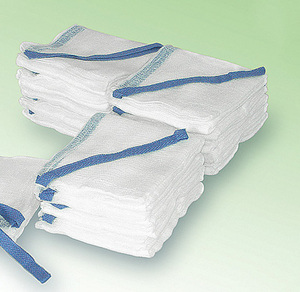

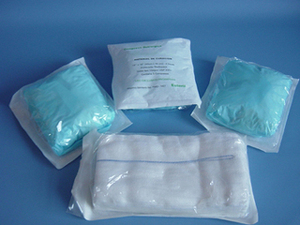






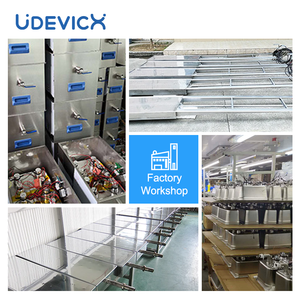






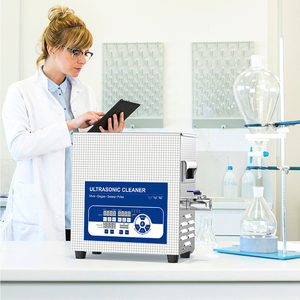

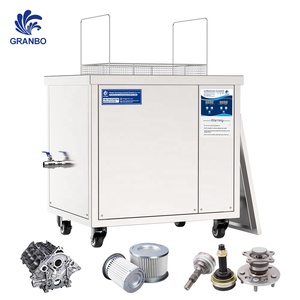




















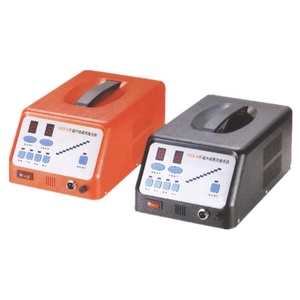



Manual Ultrasonic Lapping
This procedure is frequently employed in small-scale activities, such as fine-tuning lenses or specialized components, in which great management and precision are essential. An operator has direct control over the lapping tool and the piece being processed. Manual ultrasonic lapping machines are adjustable, allowing operators to tailor lapping movements to individual goods. This precision is critical in sectors like optics and electronics, where even minor adjustments can significantly affect the product's performance.
Mass Finishing Ultrasonic Lapping
This technique is meant for use in production settings when big batches of items need lapping. Mass extrusions improve productivity by processing larger quantities simultaneously while retaining even surface coatings. This method is commonly used in the automotive and aerospace industries, where hundreds or thousands of components require similar surface precision. These machines are engineered for productivity and can handle high workloads while assuring consistent surface treatment across all items.
Automated Ultrasonic Lapping
A state-of-the-art lapping method for enterprises with large production volume requirements is automated ultrasonic lapping. Automated machines may swiftly swap out lapping supplies to accomplish different jobs, and they might use sensors to adjust for differences in item dimensions or surface wear. Consistency and precision are significantly enhanced through automation, especially in sectors such as aerospace, where rigorous tolerances are required. In addition, this technology improves efficiency and cuts waste by minimizing human intervention.
Precision Ultrasonic Lapping
Precision ultrasonic lapping is designed for extremely delicate operations requiring extreme accuracy. In sectors such as medical equipment, high-precision optics, and aerospace components, this method concentrates on refining items with tight tolerances. Precision lapping machines are built with finer abrasive particles and stronger ultrasonic vibrations to attain mirror-like surface finishes. These machines ensure that the item's surface characteristics meet stringent international quality criteria.
Lapping Plates
The lapping plates, usually constructed from a hard substance like ceramic, carbide, or cast iron, provide a flat foundation for material removal. The plate's surface can be adjusted to match the desired finish since it wears out evenly throughout the lapping process. The choice between these materials will depend on the application since lapping plates hugely impact the finished product's surface quality and precision. Although cast iron plates are less expensive and frequently utilized in general applications, ceramic plates are more premium and long-lasting for precision jobs.
Abrasive Slurries
In ultrasonic lapping, abrasive slurries include finely crushed abrasive particles and a liquid carrier that facilitates the cutting process. Alumina, silica, and diamond bits are typical abrasive materials contained within these slurries. Each abrasive substance's granule size affects the amount of material removed and the surface quality attained. Smaller grains produce a smoother end, while larger ones take off more substance quickly. The abrasive kind will depend on the material being lapped and the needed surface finish since slurries must be adjusted to the specific demands of different materials, including glass, metals, or ceramics.
Diamond Abrasives
Diamond abrasives are the most effective lapping slurry cutting tool since they are exceedingly hard and durable. They are ideal for lapping very tough materials like carbides, ceramics, and some alloys because of this property. In addition, diamond slurries are often employed in high-precision applications since they provide smooth finishes and efficient material removal. Although they are more expensive than other abrasive types, their longevity and performance in critical applications make them worthwhile.
Ceramic Abrasive Media
Ceramic abrasive media is frequently utilized for lapping softer materials like aluminum, copper, and other non-ferrous metals. The metal particles are tough and resilient, ensuring they keep their form throughout the lapping process. In addition, ceramic abrasives are helpful for tasks requiring moderate material removal since they remove material more gently than harder substances like diamonds.
Synthetic Abrasives
Silicon carbide and aluminum oxide are examples of abrasive materials that are frequently employed in ultrasonic lapping and are artificially produced. These abrasives are reasonably priced and adaptable, making them excellent for various normal lapping applications. For example, aluminum oxide performs well when lapping steel or other tough metals, while silicon carbide is perfect for softer metals like copper and brass because of its sharp edges and high wear resistance.
Flat Lapping
Flat lapping is an essential ultras humid lapping technique used to achieve flat, ultra-smooth surfaces on parts. This method focuses on generating a flat, even finish on the item's surface by putting it in contact with a rotating lapping plate. Due to its capacity to provide tight tolerances and eliminate surface irregularities, flat lapping is frequently used in precision sectors, including optics, electronics, and aerospace. Silicon wafers, optical lenses, and ceramic components are common products that benefit greatly from flat lapping since surface quality is crucial in these applications.
Ball Lapping
Ball lapping is a specific method for lapping spherical components or components with curved surfaces. This method is particularly useful in applications where the final product requires a rounded finish, such as in bearings, valves, or lens balls. The lapping plate's spherical parts are rotated in contact with each other, producing a smooth, polished surface. Since the process can enhance both the spherical and external surfaces of a part at the same time, it is a practical choice for applications requiring complex forms.
Cylindrical Lapping
This technique smooths and polishes the outer diameter of cylindrical parts, such as rods, tubes, and shafts. In this technique, the workpiece is placed inside a lapping fixture, and rotating lapping components carry out the operation. Because of its ability to improve the wear resistance and surface smoothness of vital components in the automotive and hydraulic sectors, cylindrical lapping is widely employed for precision finishing of parts like valve cylinders and pump shafts.
Internal Lapping
Internal lapping aims to enhance internal surfaces, such as holes, tubes, and cylinders. This method is significant for applications where surface quality affects part performance or longevity, such as in oil and gas or aerospace components. Internal lapping employs specialized tools and slurries to guarantee that the item achieves the proper finish on the inside surfaces. Because it enhances fluid transportation channels, internal lapping is frequently employed in areas where components must transport fluids, such as pipes and valves.
Double-Sided Lapping
The double-sided lapping technique concurrently laps both sides of a workpiece to give uniform flatness and thickness. This technique is commonly utilized for wafers in the semiconductor sector and other thin materials in industries like optics and electronics. Because it eliminates warping and increases consistency, double-sided lapping is ideal for high-throughput applications requiring great precision. In addition, it shortens the time spent processing by completing the lapping step for both sides simultaneously.
Precision Optics Manufacturing
Optics manufacturing relies heavily on ultrasonic lapping to achieve the high level of smoothness required for lenses and mirrors. This method ensures that optical components have a surface finish that improves light transmission and reduces distortion. For example, mirror lapping produces a surface smoother than a light beam's wavelength at the end, making it essential for high-precision optical devices like telescopes, lasers, and microscopes. Because it can increase system performance and decrease the risk of light scattering, optical industries value ultrasonically lapped items.
Semiconductor Wafer Processing
In semiconductor manufacturing, wafer lapping is a key process step that enhances silicon or other material wafers' flatness and surface quality. This practice prepares the wafer for subsequent manufacturing processes, including photolithography and chemical deposition, by guaranteeing improved yield and performance. Precision and smoothness directly affect the speed and efficiency of electronic components in the rapidly growing semiconductor sector. Ultrasonic lapping improves surface quality, supporting smaller transistor sizes for denser circuits in devices like smartphones and computers.
Aerospace Components Finishing
The aerospace industry uses ultrasonic lapping extensively to treat components including wings, engines, and landing gear that must withstand difficult settings. The method ensures that critical components have a surface finish that improves durability, reduces drag, and increases resistance to corrosion. Furthermore, the smooth finish improves stress distribution on the surface and lowers the danger of fatigue failure. In the aerospace sector, where safety and performance are essential, ultrasonic lapping provides enhancement for high-precision components.
Medical Device Surface Refinement
For medical equipment such as surgical implants, instruments, and diagnostic tools, the medical profession requires extremely clean, smooth surfaces to prevent infection and enhance the lifetime of these products. Ultrasonic lapping creates smooth, mirror finishes on metal and ceramic implants, enhancing biocompatibility and making surfaces easier to clean. For example, hip joints, dental implants, and pacemaker components benefit from lapping since improved surface quality lowers particle release, which could endanger patient health. Furthermore, sharp instruments have a smooth surface that enhances cutting performance and durability.
Advanced Materials in Electronics
In the electronics business, ultrasonically lapping materials like ceramic insulators and magnetic components improves surface quality and smoothness, enhancing system performance. The technique enhances these components' function and reliability by removing surface imperfections that may cause electrical performance degradation. Magnetic heads in data storage devices, insulators in high-frequency circuits, and other vital components in this industry gain from lapping since improved surface quality lowers friction, improves heat dispersion, and increases efficiency.
Precision Surface Finishing
Surface finishing accuracy is one of ultrasonic lapping' primary advantages. This technique uses high-frequency sound waves to remove tiny bits of material from a workpiece, allowing tight tolerances of up to a few microns or even less. Such precision is essential in sectors where minute adjustments could significantly impact item performance. In addition, industries such as aerospace, optics, and electronics frequently use ultrasonic lapping since it offers consistent precision to improve component performance.
Smooth Surface Quality
Unlike machined or ground surfaces, ultrasonic lapping polishing produces extraordinarily smooth finishes. Ultrasonic lapping may produce finishes that are, on average, smoother than a light beam's wavelength, reducing surface roughness values to a fraction of a micron. Such surface quality is essential for many applications where smoother surfaces reduce friction, enhance light transmission, or improve fluid movement. For example, in optical lenses and mirrors, polished surface quality is critical for performance since poor surface quality in these applications may cause blurred images or reduced light efficiency.
Versatile Material Compatibility
Another significant benefit of ultrasonic lapping is its adaptability to various materials. Ultrasonic lapping effectively finishes many complex form materials, including brittle rough ceramics, hard metals, and soft media. This technique is highly versatile since it can work with pieces with complex geometries that are difficult to finish using conventional techniques like grinding or polishing. As a result, ultrasonic lapping is a preferred option for various industrial sectors needing surface finishing for various goods due to its widespread applicability across a wide range of materials.
Improved Component Performance
Improving component performance is the fundamental goal of surface treatment in many industries, and ultrasonic lapping significantly impacts this goal. For example, the smooth surface obtained through lapping leads to better friction and wear resistance. Furthermore, in the semiconductor industry, it improves the surface quality of silicon wafers and hence boosts the performance of electronic devices made from these wafers. Improved surface quality enhances the performance of critical components in many industries, from hi-tech defense to commercial applications.
Reduced Production Time
Despite its many benefits, one more edge of ultrasonic lapping is it reduces on time and gives high production efficiency at the same time. With ultrasonic lapping, good surface finishes may be accomplished rapidly, even on complex pieces. In addition, this technique limits the number of operations needed to achieve the proper surface finish, which cuts down on total time. For example, thanks to lapping, manufacturers can produce high-quality, high-performance components faster than with many other surface finishing techniques. It makes them offer quality lapping services faster to their numerous clients across various industries.
A1: Ultrasonic lapping is a technique used to create a smooth surface on a workpiece by partially immersing it in a lapping solution and bombarding it with focused ultrasonic waves. The waves create tiny bubbles that collapse with great force, producing high shear forces that help remove surface material and any attached debris, resulting in a smooth, flat, reflective surface.
A2: Ultrasonic lapping can finish a large variety of materials, including brittle ones like glass and ceramic, hard ones like tungsten carbide and titanium, and soft ones like aluminum and copper. It is also effective on complexly shaped and delicate parts that are difficult to finish using other methods.
A3: Ultrasonic lapping is widely used in the semiconductor industry to create silicon wafers and other electronic components. It is also used in the aerospace industry to finish precision components, in optics to polish lenses, and in the medical field for implants and instruments. Other industries that utilize ultrasonic lapping include automotive, defense, and commercial high-tech.
A4: Compared to other surface finishing techniques, ultrasonic lapping provides a smoother surface finish with better precision and fewer harsh effects. Other techniques like grinding, polishing, or chemical milling can damage the substrate or create non-uniform finishes. On the other hand, ultrasonically lapping silicon wafers produces a surface that is very flat and reflective and improves performance in a variety of applications.